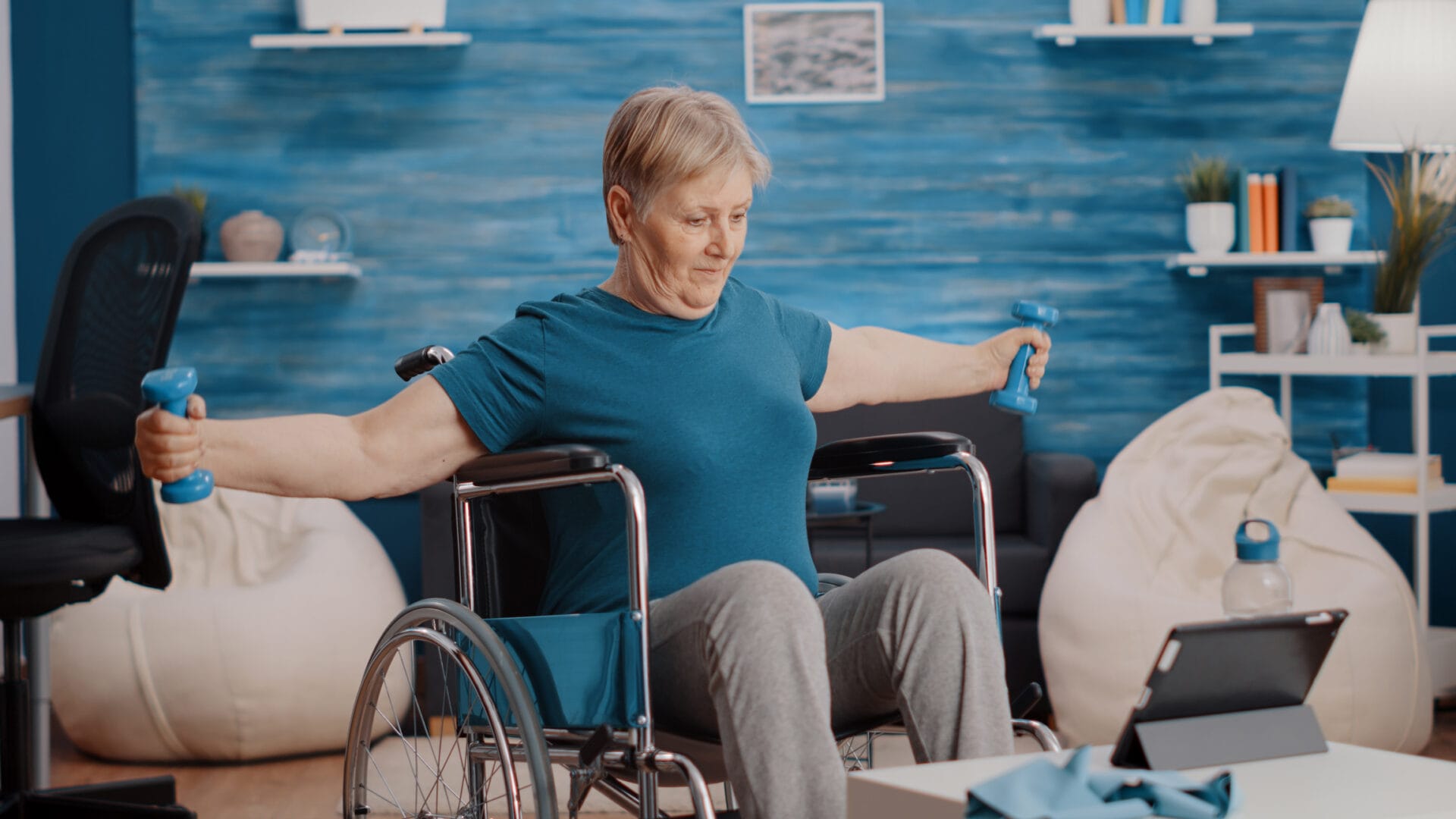Aging in place embodies the cherished aspiration of many seniors to maintain independence and autonomy by living in their own homes for as long as possible. This concept reflects a deep-rooted desire to preserve familiarity, community connections, and a sense of belonging amidst the challenges of aging.
However, as individuals age, they may encounter physical or cognitive limitations that pose obstacles to independent living. In response to these challenges, adaptive technologies have emerged as invaluable tools in facilitating and safeguarding the ability of seniors to age in place.
These technologies encompass a wide range of innovations designed to enhance safety, accessibility, and convenience, ultimately empowering seniors to maintain their desired lifestyle while ensuring their well-being and peace of mind.
What Are Adaptive Technologies?
Adaptive technologies encompass a diverse array of tools, devices, and systems specifically designed to accommodate the unique needs and challenges faced by seniors as they age. Unlike standard assistive devices, which primarily address individual disabilities or limitations, adaptive technologies are versatile solutions that can be customized to meet a variety of needs and preferences.
These technologies often integrate advanced features such as automation, remote monitoring, and user-friendly interfaces to enhance their effectiveness and usability.
The importance of adaptive technologies in enhancing the safety, comfort, and independence of seniors living at home cannot be overstated. By addressing specific challenges associated with aging, such as mobility limitations, cognitive decline, and medical conditions, these technologies empower seniors to maintain their desired lifestyle while minimizing risks and maximizing quality of life. From smart home systems that automate tasks and enhance accessibility to wearable devices that monitor health and provide emergency assistance, adaptive technologies offer practical solutions that promote aging in place with dignity, confidence, and peace of mind.
Key Categories of Adaptive Technologies
Smart Home Devices
Smart home technologies offer convenient and secure solutions for seniors living independently. These devices include smart thermostats, lights, and security systems that can be controlled remotely, enhancing comfort and safety. Voice-activated devices like smart speakers provide assistance with tasks, entertainment, and emergency support, offering seniors greater autonomy and peace of mind in their daily routines.
Health Monitoring Systems
Health monitoring systems play a crucial role in proactive healthcare management for seniors. Wearable devices, such as smartwatches and fitness trackers, monitor vital signs like heart rate, blood pressure, and sleep patterns, enabling early detection of health issues and promoting overall well-being. Emergency response systems provide added security by alerting family members or medical personnel in case of a fall or other emergencies, ensuring timely assistance when needed most.
Mobility Aids
Innovations in mobility aids empower seniors to maintain mobility and independence within their homes. Advanced walkers, wheelchairs, and robotic exoskeletons assist with movement and stability, enabling seniors to navigate their surroundings with confidence. Stair lifts and smart furniture further enhance accessibility and safety, allowing seniors to move freely and comfortably throughout their homes.
Communication Enhancements
Communication technologies enable seniors to stay connected with loved ones and access essential services. High-tech hearing aids and enhanced visual phones or apps tailored for the visually impaired improve communication and accessibility. Additionally, apps and devices designed for seniors facilitate social interaction, such as video calling and social media platforms, promoting social engagement and reducing feelings of isolation.
Kitchen and Household Modifications
Kitchen and household modifications enhance safety and accessibility for seniors in their daily activities. Automated kitchen tools and utensils designed for ease of use by people with limited mobility or strength simplify meal preparation and cooking. Smart appliances, such as stovetop shut-off systems and refrigerators with expiration reminders, prevent accidents and promote independence in managing household tasks. These adaptations enable seniors to maintain autonomy and confidence in their living environment, supporting their desire to age in place comfortably and safely.
Benefits and Considerations
Benefits and Considerations of Adaptive Technologies
When caring for aging loved ones, adaptive technologies can play a pivotal role in enhancing their independence and quality of life. However, choosing the right technologies involves navigating potential challenges alongside recognizing their significant benefits.
Benefits of Adaptive Technologies
- Promotes Independence: Technologies such as automated home systems, wearable devices, and personal emergency response systems allow seniors to perform daily activities more safely and independently. This not only boosts their confidence but also provides a sense of normalcy and control over their life.
- Enhances Quality of Life: Adaptive technologies can significantly improve the day-to-day experiences of seniors. For instance, voice-activated devices and simplified computer interfaces can help them stay connected with friends and family, pursue hobbies, and even manage household tasks, contributing to a fulfilling and engaged lifestyle.
- Supports Health and Safety: Health monitoring gadgets can track vital signs, remind seniors to take their medication, and alert caregivers in case of emergencies. This constant vigilance helps in early detection and management of potential health issues, ensuring better safety and reducing the need for frequent hospital visits.
Considerations When Implementing Technologies
While the advantages are clear, there are several factors to consider to ensure the effective use of technology:
- Cost: The expense of advanced technologies can be a significant barrier. It’s essential to balance the cost with the expected benefits and explore potential funding sources like insurance, grants, or government programs that may offset these expenses.
- Learning Curve: Some seniors might find it challenging to adapt to new technologies. Choosing devices that are intuitive and easy to use is crucial. It’s also beneficial to provide ongoing support and training to help them become comfortable and proficient with these tools.
- User-Friendliness: The technology needs to be accessible and straightforward. Features like large buttons, clear displays, and voice commands can enhance usability. Remember, the goal is to make daily activities easier, not more complicated.
Resources and Assistance for Adaptive Technologies
Finding and funding the right adaptive technologies can be a daunting task for caregivers. Fortunately, a variety of resources are available to help navigate these challenges, including government programs, nonprofit organizations, and private grants. Additionally, professional services can assist in setting up and training on new technologies, ensuring that seniors can effectively use these tools to enhance their independence.
Finding and Funding Technologies
- Government Programs: Many countries have government-funded programs that assist seniors with the cost of adaptive technologies. In the U.S., for instance, Medicare may cover part of the cost for certain medical devices, while Medicaid programs can offer support based on income and disability. Additionally, the Department of Veterans Affairs offers assistance for veterans needing adaptive technologies.
- Nonprofit Organizations: Numerous nonprofits focus on aiding seniors and people with disabilities. Organizations such as the National Council on Aging (NCOA) and the Assistive Technology Industry Association (ATIA) provide resources for accessing adaptive technology. These organizations often have programs that help with funding and selecting the right technology based on individual needs.
- Private Grants: Some private foundations and companies offer grants specifically for adaptive technologies. These grants can be found through a simple online search or by contacting organizations related to aging or specific disabilities your loved one might have.
Professional Services for Setup and Training
- Technology Assistance Providers: Many companies that sell adaptive technologies also offer setup services and ongoing support. This can include installation, configuration, and even troubleshooting issues as they arise.
- Educational Workshops and Training: Local community centers, senior centers, and universities may offer workshops aimed at helping seniors and caregivers become familiar with new technologies. These sessions can provide hands-on training and support to ensure that users feel confident in using these tools effectively.
- Online Tutorials and Support: Online platforms and forums can be excellent resources for learning about and troubleshooting adaptive technologies. Websites like YouTube also host myriad video tutorials that can guide you and your loved one through the process of setting up and using new devices.
Key Takeaways
Adaptive technologies possess the transformative potential to significantly improve the lives of seniors, enabling them to maintain their independence and live safely within the comfort of their own homes. These tools not only assist with daily activities but also provide vital health monitoring and emergency response capabilities, which are essential for aging with dignity and security.
As we have explored, the benefits of these technologies are manifold—ranging from enhanced safety and increased connectivity to better health management. However, the path to integrating these technologies into a senior's life must be navigated with care, considering factors such as cost, ease of use, and the specific needs of the individual.
For family caregivers, the message is clear: adaptive technologies are not just tools but vital companions that can make caregiving a more manageable and less stressful experience. They help bridge the gap when you can't be there in person, ensuring that your loved ones are safe, connected, and engaged.
The journey towards incorporating adaptive technologies into the life of a senior loved one is an investment in their quality of life and peace of mind for everyone involved. Embrace these opportunities, and consider how these tools can enhance the ability of your loved one to age independently and safely at home.





